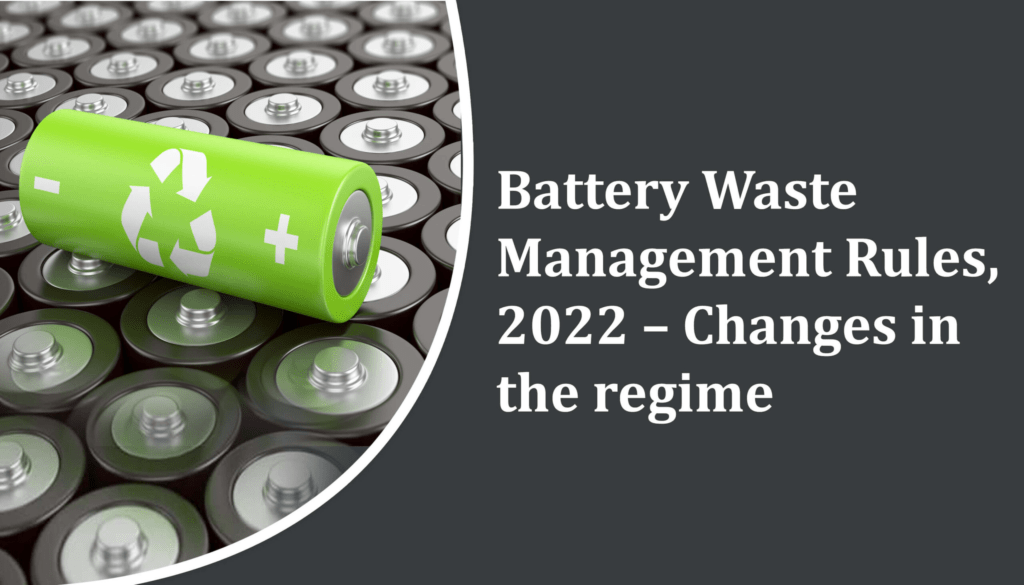The Hindu Editorial Analysis
5 August 2025
The missing link in India’s battery waste management
(Source – The Hindu, International Edition – Page No. – 8)
Topic : GS 3 – Environment
Context
India must first adopt a fair Extended Producer Responsibility (EPR) policy with floor pricing to ensure sustainable battery waste management.

Introduction
India, with its focus on decarbonisation, has seen a rapid surge in electrification, especially in the adoption of electric vehicles (EVs). According to projections, India’s lithium battery demand for EVs could rise dramatically from 4 gigawatt-hours (GWh) in 2023 to nearly 139 GWh by 2035. Additionally, the country’s growing renewable energy sector is further accelerating this demand through the increasing use of battery energy storage systems (BESS). These developments are crucial in supporting India’s ambition to achieve its Net Zero emissions goal by 2070.
The Environmental Urgency of Battery Waste Management in the EV Era
- While the adoption of electric vehicles (EVs) is a welcome step towards clean mobility, it can result in environmental harm without a robust recycling framework.
- Improper disposal of lithium-ion batteries poses serious threats, including the leakage of hazardous materialsinto soil and water bodies.
- The challenge is magnified by the rising volume of battery waste — in 2022, lithium batteries made up 700,000 metric tonnes out of 1.6 million metric tonnes of total e-waste generated.
- In response to these environmental risks, the government introduced the Battery Waste Management Rules (BWMR) in 2022 to promote sustainable management, recycling, and safe disposal of battery waste.
The first problem is the floor price
- The Extended Producer Responsibility (EPR) is a core policy that mandates producers to fund the collectionand recycling of batteries, aiming to close the loop in the battery value chain
- Since producers lack the necessary infrastructure and logistics, they depend on recyclers to fulfill their EPR targets
- In return, recyclers receive EPR certificates, but only if they are compensated with a minimum price, called the EPR floor price
- The EPR floor price is crucial for covering upfront investments in:
- Infrastructure
- Research and development
- Labour
- Technology
- Recycling methods
- A key challenge is that the current EPR floor price is too low to sustain effective and safe recycling of lithium battery waste
- Proper disposal of lithium batteries is costly due to:
- The need for advanced processing technologies
- Safe transportation
- Use of skilled labour to prevent environmental hazards
- Lithium-ion batteries contain valuable minerals such as lithium, cobalt, and nickel, whose recovery can reduce import dependency and strengthen resource security
- If the EPR floor price fails to reflect the real cost of recycling:
- Legitimate recyclers may find operations financially unviable
- Informal and fraudulent recyclers gain a market edge, leading to:
- Fake certificates
- Hazardous waste dumping
- Such issues have previously plagued India’s plastic waste sector, and similar trends threaten to undermine circular economy goals in the battery sector
- The absence of a fair EPR pricing regime could lead to:
- Severe environmental degradation
- Long-term health risks
- Over $1 billion in foreign exchange losses by 2030 due to poor battery material recovery
- A robust and fair EPR floor price is essential to:
- Protect the environment
- Support recyclers
- Strengthen India’s battery supply chain
- Achieve circular economy ambitions
A resistance to compliance
- Large manufacturers and consumer electronics producers are making waste regulation harder by resisting compliance, especially in developing countries.
- These companies often adopt lenient policies in the Global South, allowing them to bypass environmental duties, which threatens the creation of sustainable battery ecosystems.
- Adjusting the Extended Producer Responsibility (EPR) floor price does not necessarily burden consumers, as:
- Global metal prices have dropped over the last two years.
- OEMs (Original Equipment Manufacturers) have not reduced product prices, indicating they can absorb recycling costs.
- A realistic EPR floor price can:
- Ensure sustainable recycling,
- Promote a circular economy, and
- Avoid passing costs onto end users.
- India should adopt an EPR pricing model that is:
- Fair,
- Globally benchmarked, and
- Reflective of the true cost of battery collection, processing, and material recovery.
- As the system matures, prices can gradually shift to market-driven rates with proper standardisation.
- A multi-stakeholder dialogue is urgently needed between government, industry, and recyclers to develop a viable pricing structure based on global best practices.
- For instance, the UK charges ₹600/kg for EV battery recycling, which is significantly higher than rates considered in India—even after adjusting for purchasing power.
- A strong EPR regime will:
- Protect legitimate recyclers,
- Discourage non-compliance,
- Enable audits by producers, and
- Drive the transition to a green economy through accountability and systemic reform.
Conclusion
India urgently needs to strengthen enforcement mechanisms to manage battery waste effectively. This involves establishing robust audit systems, digitising the issuance and tracking of Extended Producer Responsibility (EPR) certificates, and applying stringent penalties for fraud and non-compliance. Equally important is the integration of informal recyclers into the formal sector through training and regulatory support, which can curb hazardous practices and expand the nation’s recycling capacity. This is not merely an environmental concern—it is also an economic and strategic priority. By revising the EPR floor price, enhancing regulatory enforcement, and formalising informal operations, India can transform battery wastefrom an urgent crisis into a powerful driver of green growth and a truly circular economy.


